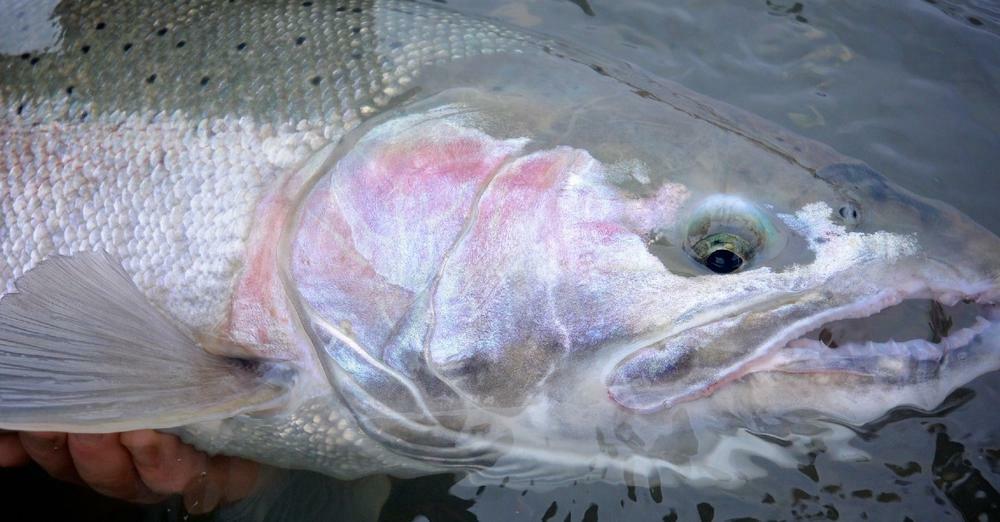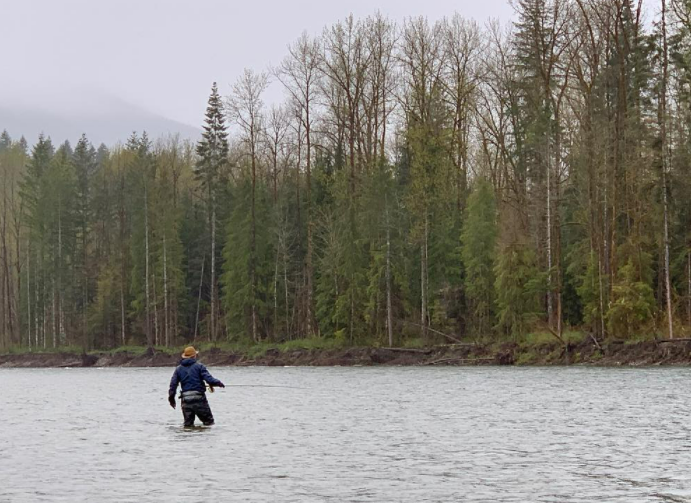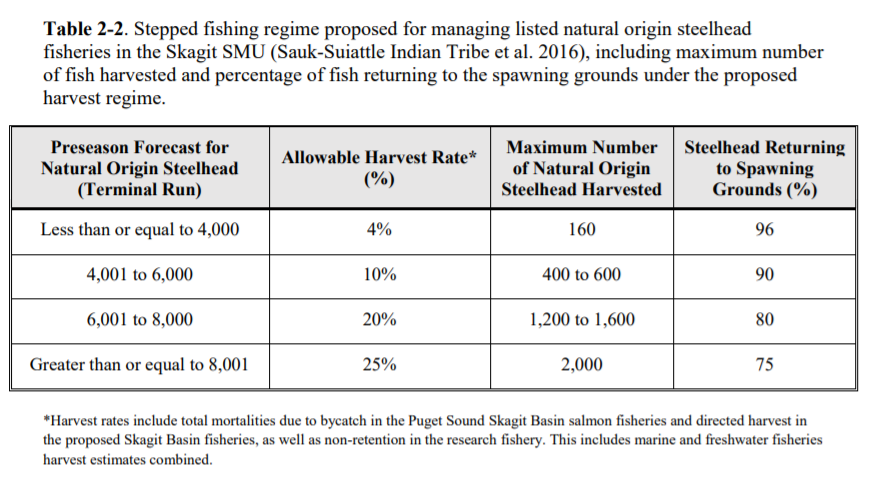Skagit River Fish Report for 1-12-2022
Fishing for wild steelhead will not open on Skagit and Sauk rivers with too few fish forecasted to return in 2022
Skagit River

by WA Department of Fish & Wildlife Staff
1-12-2022
Website
Washington Department of Fish and Wildlife fish biologists and tribal co-managers have forecasted that only 3,833 wild steelhead will return to the Skagit River and its tributaries in 2022.
Wild Puget Sound steelhead have been listed as threatened under the Endangered Species Act (ESA) since 2007. When projected returns to the Skagit Basin are 4,000 or fewer fish, under a federally-approved fisheries management plan the number of allowable impacts to those fish is substantially restricted.
This means that popular winter and spring steelhead fishing seasons will unfortunately not be held on the Skagit and Sauk rivers. These rivers will close for trout and other gamefish at midnight on Jan. 31st as noted in the WDFW’s 2021–22 sport fishing rules.
“We know this is a major disappointment for anglers in the North Puget Sound region and beyond who look forward to this iconic steelhead fishery,” said Edward Eleazer, WDFW’s regional fish manager.
“We had hoped that enough wild steelhead would be forecasted to return to the ‘Mighty Skagit’ to allow for a fishery this year, but that’s just not the case,” said Eleazer. “We need to follow the Fishery Resource Management Plan and our ESA permit, as well as support continuing to recover this steelhead run.”
The Skagit Basin was closed to wild steelhead fishing for several years before reopening for limited fisheries in the winter and spring of 2018 and 2019 after relatively strong returns. WDFW worked with tribal co-managers, local community leaders, anglers, and conservation groups to develop a fishery plan and secure an ESA permit to reopen.
Recent reduced wild steelhead returns are likely related to poor ocean forage conditions and warmer marine waters that have negatively affected steelhead and salmon survival rates.
The Skagit and Sauk wild steelhead fishery previously did not open in 2020 amid projected low returns of 3,963 fish.
In 2021, 4,297 steelhead were forecasted to return to the Skagit and its tributaries including the Sauk, and a limited fishery was opened four days per week from Feb. 1 through April 13th. However, data that WDFW and partners compiled through spawning surveys, angler interviews, and tribal harvest indicated that the actual 2021 run was only 3,576 fish. This warrants caution in evaluating the 2022 forecast.
Submitted by WDFW and tribal co-managers and approved by the National Marine Fisheries Service in April 2018, the Skagit River Steelhead Fishery Resource Management Plan includes several “Allowable Harvest Rates” (shown below) depending on the forecasted run size. These are ceilings for the maximum allowed wild steelhead mortality from fisheries, though WDFW and the tribes may exercise additional caution depending on return forecasts and other factors.
In addition to fish caught by tribal fishers, harvest rates include a 10 percent mortality ratio for steelhead caught and released by recreational anglers based on the best available science on angling impacts in similar fisheries.
With fewer than 4,001 steelhead projected to return in 2022, the Skagit co-managers (WDFW and several Native American tribes) are allowed up to 4 percent impacts and will not have fisheries targeting wild steelhead this year. These impacts will be reserved for incidental steelhead encounters (known as “take”) that occur during Skagit River fisheries targeting other species, such as spring Chinook salmon.
One possible exception is a limited “tangle net” fishery where steelhead are targeted, caught, sampled, tagged, and released. With rigid scientific methodology, this test fishery informs the understanding of Skagit wild steelhead run timing, life history, size/length, and more to improve the management and conservation of these fish.
In the future, WDFW also hopes to use technologies such as sonar to institute in-season monitoring of Skagit steelhead in real time, similar to programs that count sockeye salmon returns in Alaska and British Columbia.
The wild steelhead is Washington’s State Fish, and the Skagit Basin holds venerable status among steelheaders as the birthplace of several fishing techniques.
These include the “Skagit style” of two-handed spey casting and heavy “Skagit lines” for fly fishing, both developed by Washington anglers in the 20th century for effectiveness in the wide, fast-moving river draining the western flanks of the North Cascades.
The Skagit and Sauk are also home to iconic gear fishing traditions, including the deployment of plugs fished behind boats rowed by anglers, as fishing under motor power is not allowed.
From the Skagit Estuary to upstream projects like Barnaby Slough, WDFW, tribal governments and numerous other groups continue working to recover wild steelhead, protect and restore habitat, and remove fish passage barriers to improve fish survival in the Skagit Basin.
The Washington Department of Fish and Wildlife works to preserve, protect and perpetuate fish, wildlife and ecosystems while providing sustainable fish and wildlife recreational and commercial opportunities.
Photos
More Reports

1-7-2022
Meetings also scheduled Jan. 21 and 28 OLYMPIA – The Washington Fish and Wildlife Commission expects to hear updates and make...... Read More

1-6-2022
OLYMPIA – Razor clam devotees can make their way to coastal beaches as shellfish managers with the Washington Department of...... Read More

Website Hosting and Design provided by TECK.net


